I love sunflowers. Sunflowers display a bright splash of cheerful color against the garden fence, they provide an abundant crop of seeds which both our family and the birds enjoy, and they are so easy to grow. It doesn’t matter if you have a green thumb or not. If you can stick a seed in the soil, you can grow a sunflower.
Successful sunflower cultivation depends on a great many variables:
- Seed variety selection
- Growing site selection
- Planting date
- Seedbed preparation
- Method of planting
- Fertilization
- Moisture
- Weed control
Sunflowers are fast growers with some varieties growing more than 12 feet tall in less than six months.
Soil, Sun, And Moisture Requirements
Sunflowers require a location with full sun and shelter from the wind. Although sunflowers will grow in partial shade, plants deprived of the sunlight and warmth tend to be tall, leggy, and produce small and fewer flowers.
Related Post: How Sunflowers Follow The Sun
Sunflowers are resilient plants that will grow in almost any soil — including alkaline soil which few plants tolerate. They flourish in a full-sun location that has fertile, nutrient-rich loamy soil with good drainage.
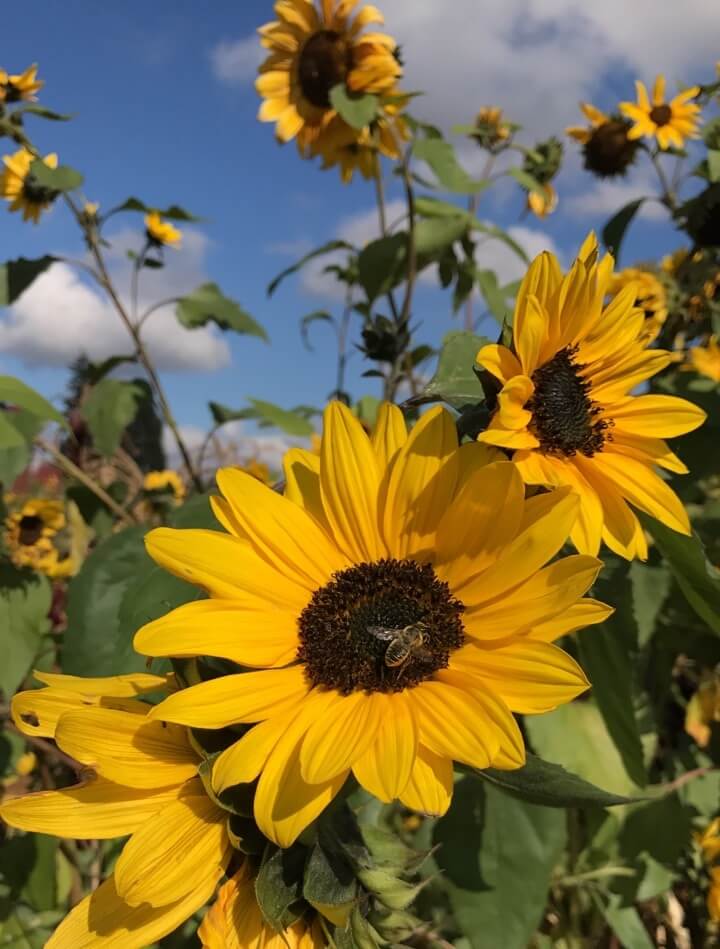
When preparing a site for sunflowers, cultivate the soil to a depth of at least 8 inches, removing the rocks, weeds, and roots. Sunflowers have a hard time growing in compacted soil. Before planting, the seedbed soil should be loose and crumbly.
Related Post: Soil Testing
Although sunflowers seem to survive in poor soil, they prefer a nutrient-rich environment. To give your flowers a much-appreciated boost, add a generous amount of well-aged garden compost or herbivore manure (goat, sheep, cow, horse) and work in well.
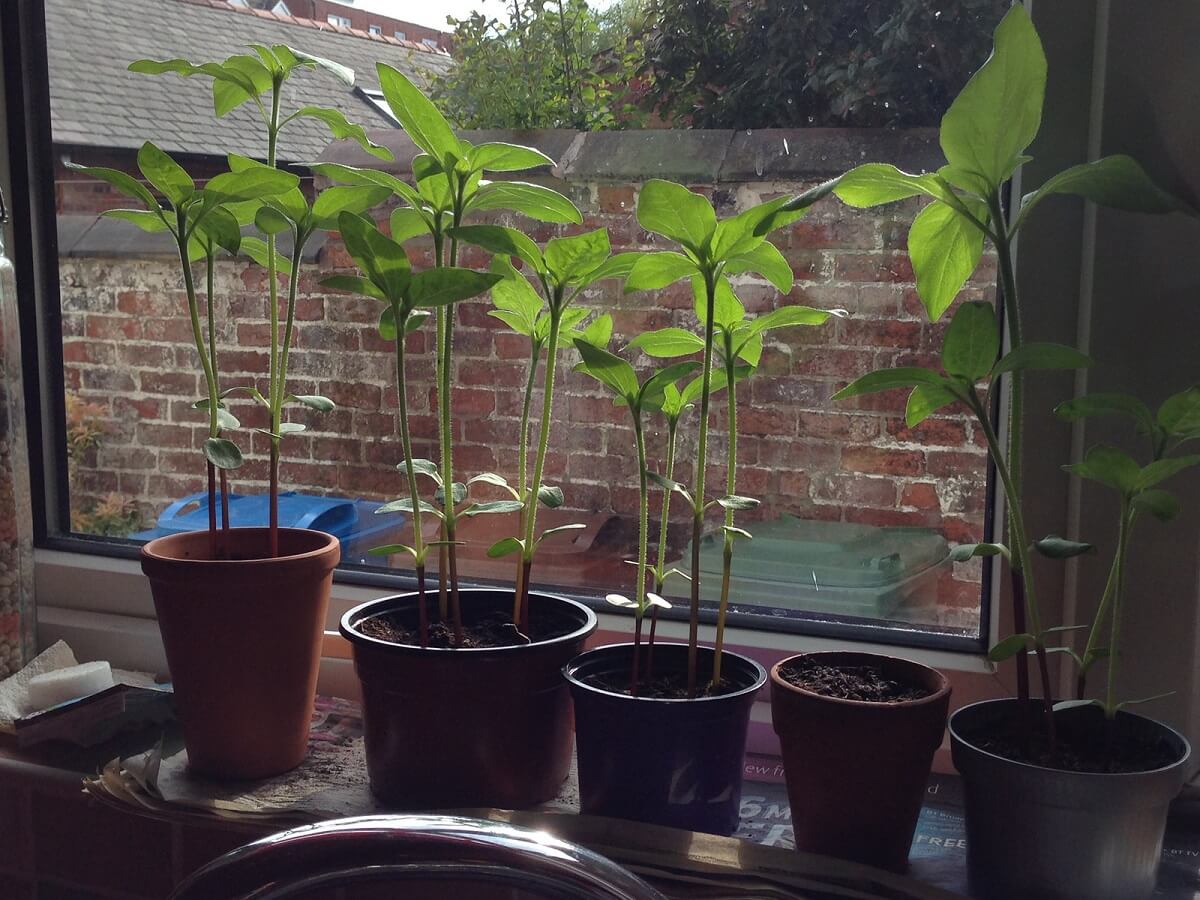
Sunflowers require lots of moisture. Make sure developing plants receive at least two inches of water per week during the growing stage. Once established, mature plants can get by on less and will survive periods of drier conditions.
Planting Sunflowers
Sow sunflower seeds directly into the soil after all danger of a late spring frost. It’s best to wait until the soil warms. Sunflowers flourish in warm climates and are known for their ability to remain perky and pretty through the long hot days of summer.
Sunflowers grow best, however, when the temperature is between 70- and 80-degrees Fahrenheit. For optimum germination, the soil should be at least 55 degrees at the time of planting. Soaking the seeds overnight in tepid water hastens germination.
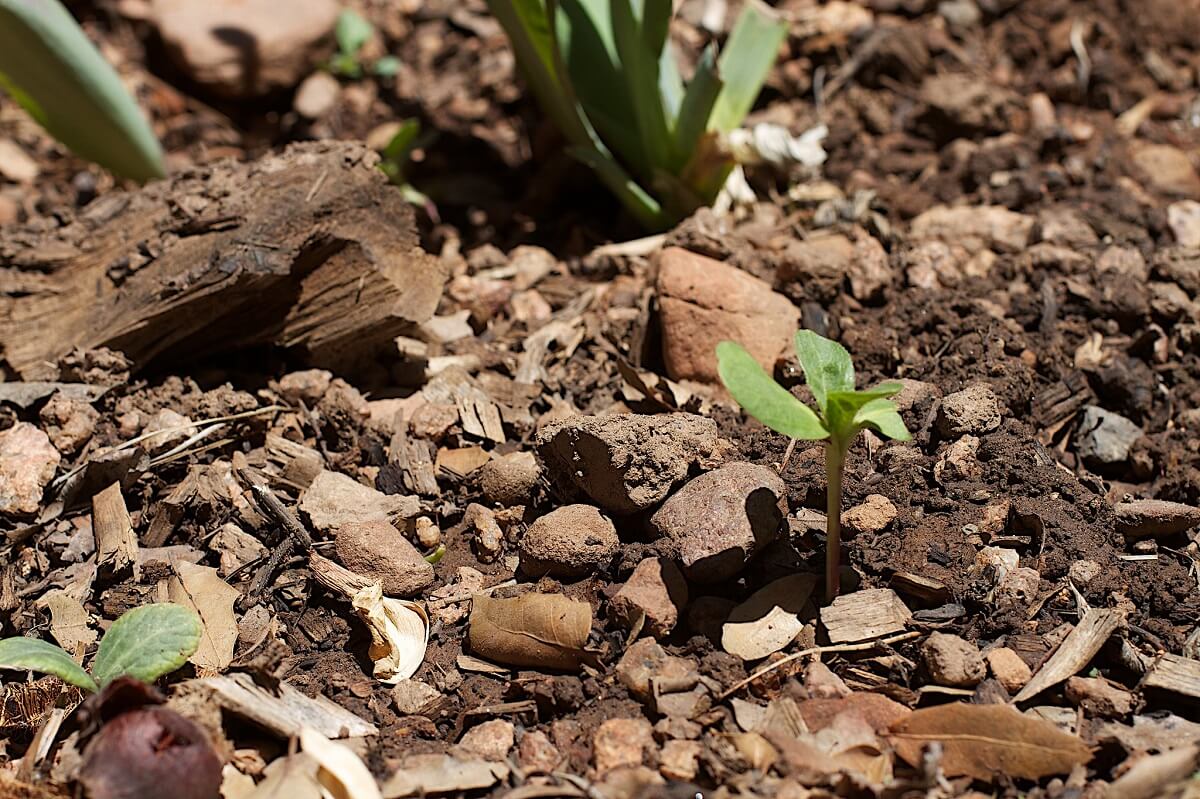
When planting, allow room between the plants. Low-growing, branching varieties need plenty of room to grow. Depending on the variety, plant sunflowers 12 to 24 inches apart.
Staking Sunflowers
Most varieties of sunflowers do not require staking. Tall varieties exposed to the wind or those grown in less than full sun where the stalks become leggy for lack of light, will benefit from support.
Choose metal or wood stakes, placed close to the plant stalk, and attach the plant with garden twine or soft ties. Sunflowers grown in clumps tend to support each other to prevent wind breakage.
Companion Planting
Soybeans, corn, peppers, cabbage, cauliflower, and tomatoes are great neighbors to plant among sunflower displays. Sunflowers are also excellent companion plants for squash, pumpkins, cucumbers, or zucchini. The sturdy stalk of the sunflower offers effective support for vining garden plants, but avoid planting sunflowers in close proximity to potatoes.
Weed Control
While it isn’t necessary to mulch sunflowers, they will benefit from a thick, 3 to 5-inch application of organic mulch around the base of the plant. Some options include untreated wood chips, sawdust, pine bark, dried leaves, or grass clippings.
Mulch retains moisture and suppresses troublesome weeds. Some gardeners prefer to plant thick, weed-choking ground cover plants such as wooly thyme or ajuga to keep stray grasses and weeds in check.
A Few Sunflower Tips
Because most sunflowers found in homestead gardens are annuals, you will need to replant every year. Sunflowers will self-seed. However, the plants that develop from annual seeds may differ in color and form from the parent plant.
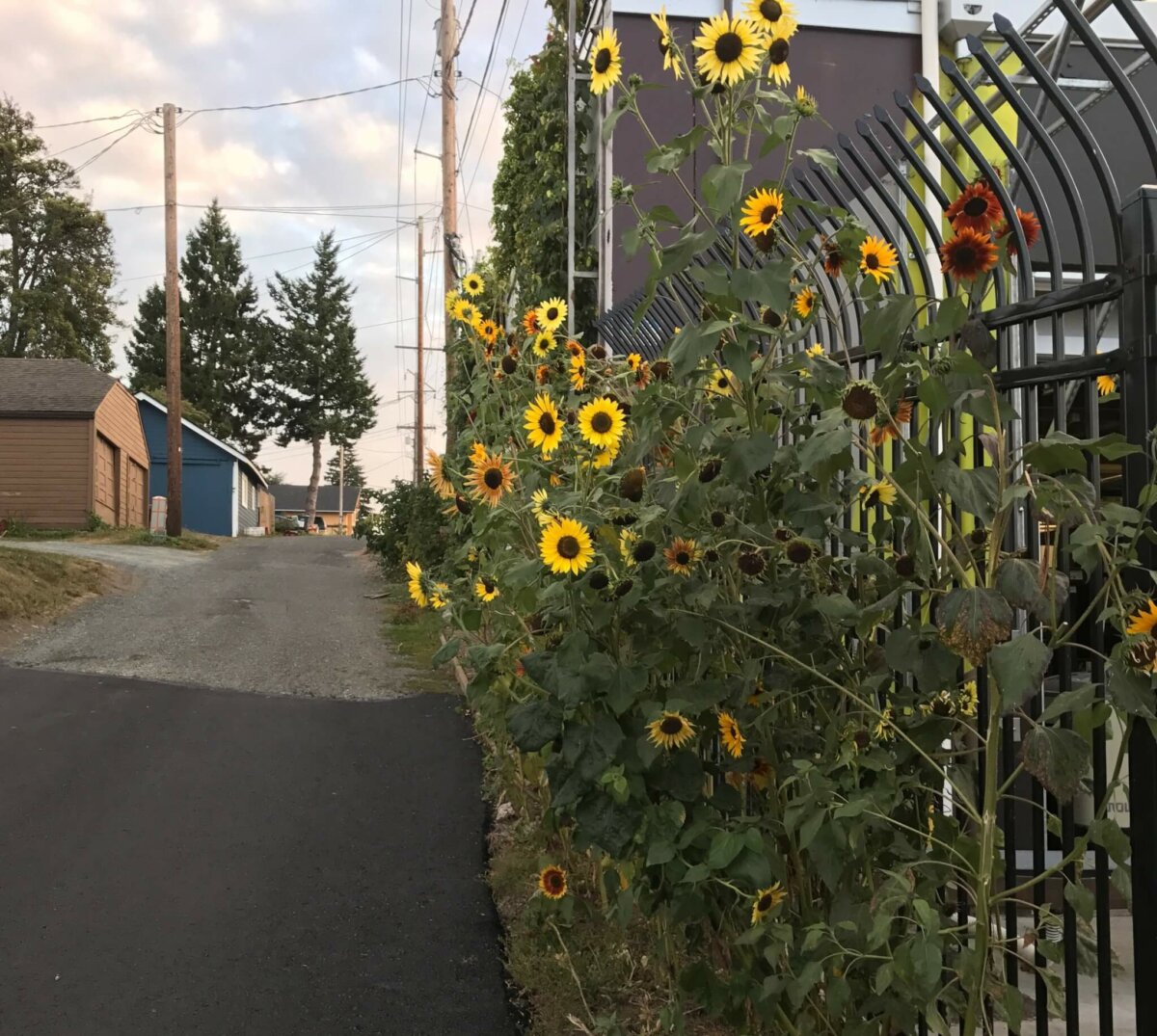
The nutritious seeds of the sunflower mature on the flower head and are vulnerable and exposed to predatory pests like squirrels and birds. To prevent damaged, empty heads, cover the flowers with mesh bags to deter seed thieves from stealing your crop.
When the seeds ripen, they turn brown (a signal they are ready for harvest). Cut the flower head off leaving a couple feet of stem. Then hang upside down to dry. To prepare the seeds for snacking, soak them overnight in salt water (1 cup salt to 1 gallon of water). Drain and slow roast at 200 degrees Fahrenheit for two hours.
Sunflower Varieties
The original species of sunflowers that are native to Mexico, grow tall and produce a single brilliant yellow flower. Hybrid varieties feature multiple branching and flowers in a wide range of colors from creamy white to bold red. There are more than 70 different varieties of sunflowers.
Related Post: Summer Flowers: 10 Blooms To Make Your Garden Pop With Color
Of these, about 40 varieties are perennials. Hybrid annual varieties also bloom for a more extended period throughout the growing season and produce multiple flowers. Annual varieties are the ones most often planted in the home garden.
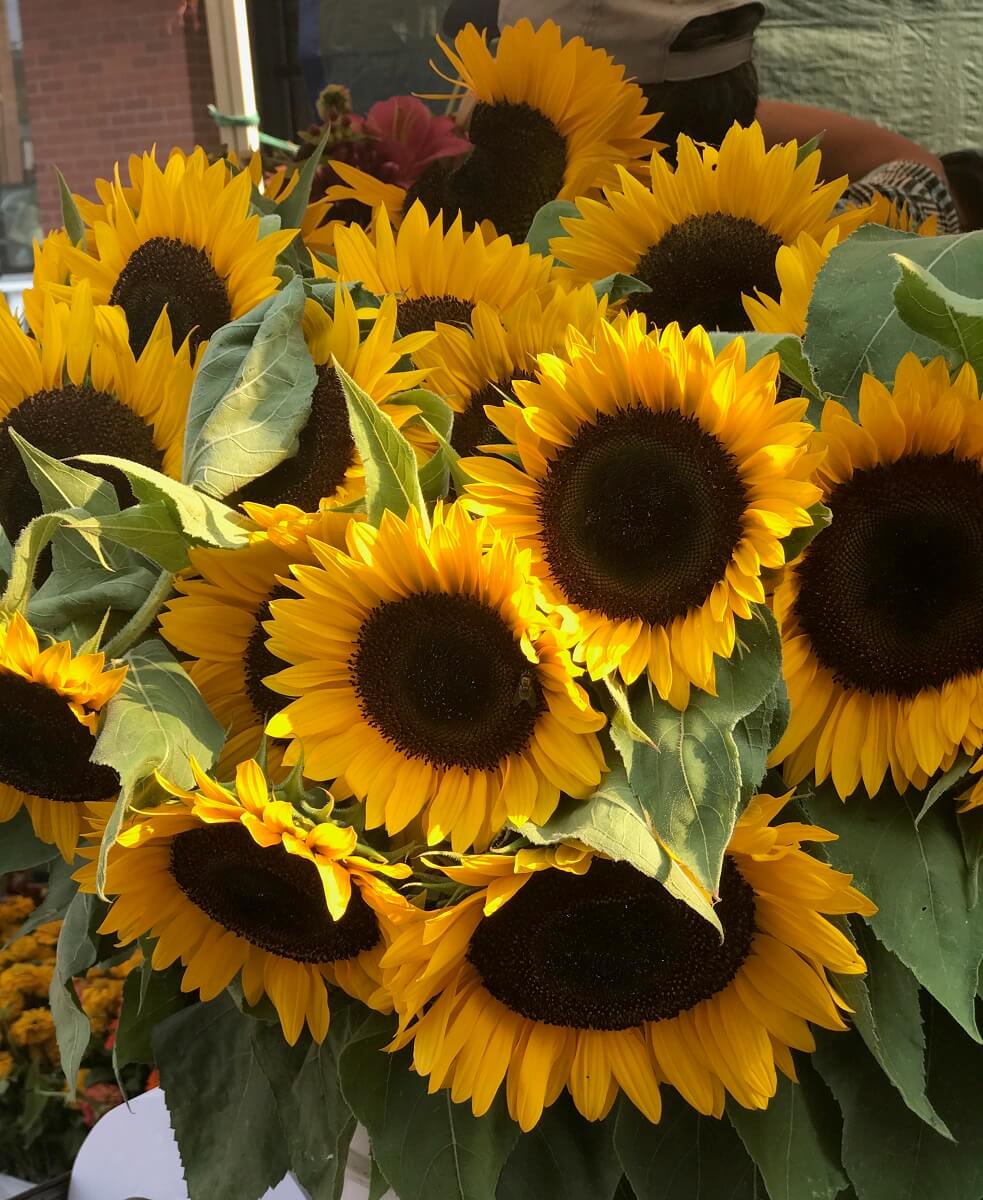
Different varieties of sunflower exhibit different growing patterns. Size at maturity varies from less than a foot tall to more than 15 feet in height. Depending on the variety, sunflowers may produce only one sunflower per stalk or display multiple flower heads.
There are two kinds of sunflowers: perennial and annual. Some colors include lemon yellow, orange, reddish orange, red, bronze, and even white.
The multi-flower types tend to be shorter and compact with multiple branches and numerous flower heads. The single flower varieties produce a more massive head and more sunflower seeds.
Giant Sungold And Golden Cheer
Giant sungold and golden cheer are two of the most popular varieties of double-blooming sunflower. Producing large blooms from 8 to 10 inches wide, the flowers are a deep, golden yellow.
Russian Mammoth
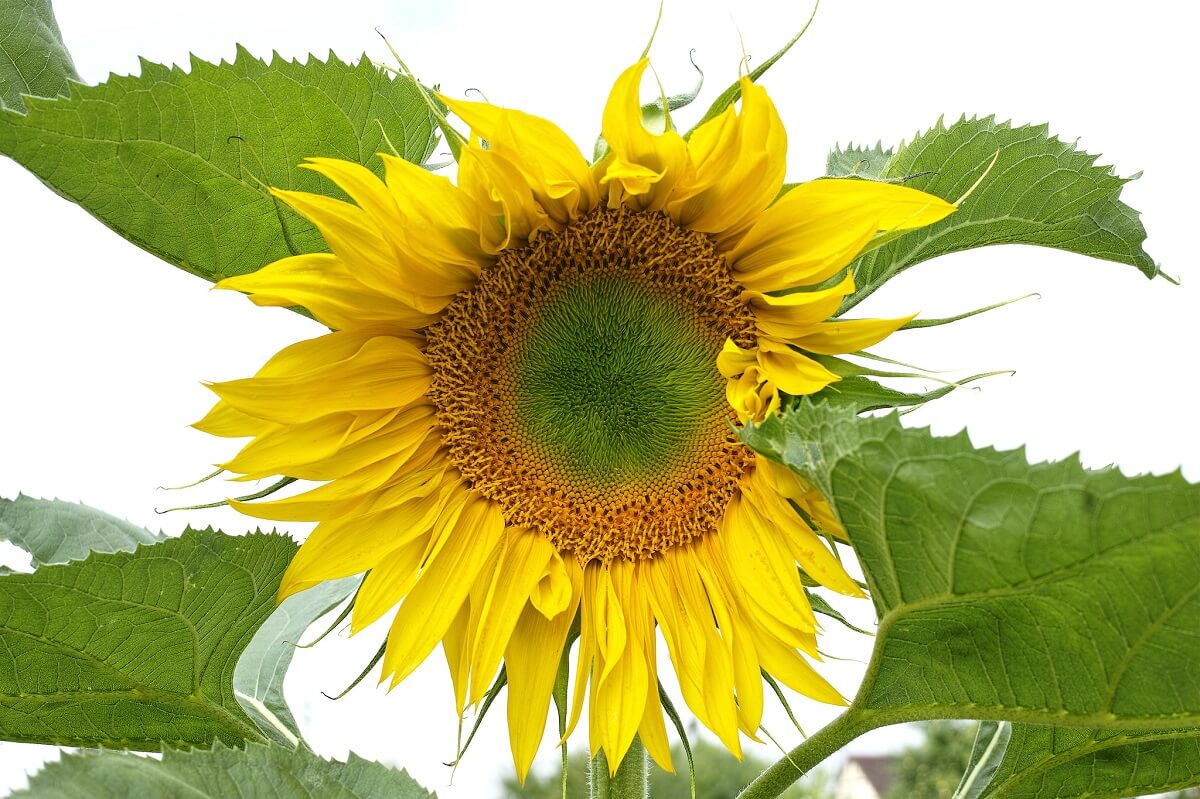
If you want to impress the neighbors and produce an abundant crop of seeds, choose Russian mammoth. This hardy variety grows to an enormous size, reaching upward for more than 12 feet. The flower heads are dense with oil-laden seeds and can be as big as 15 to 18 inches wide.
Strawberry Blonde And Ring Of Fire
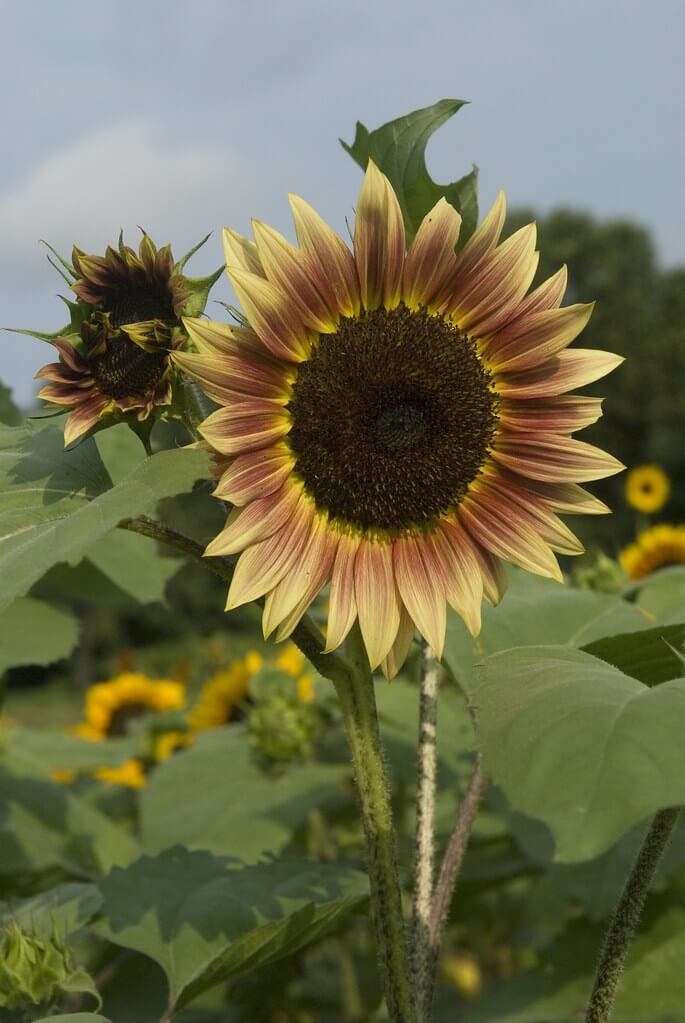
Strawberry blonde and ring of fire varieties present a large variegated flower with shading that ranges from the palest pink to brick red with a yellow edge. These impressive cultivars typically grow more than 6 feet tall with flowers that rival the size of dinner plates.
Moulin Rouge
Moulin Rouge is a variety popular for home garden landscaping. The best of the late bloomers, this bright red-flowered sunflower adds visual interest and intense red color to the garden late summer through fall.
Little Becka
If you are limited for space but want the cheerfulness of sunflowers to grace your garden, choose Little Becka, a dwarf variety producing an abundance of reddish-orange flowers. Sunny smile, another popular dwarf variety reaches a diminutive height of 12 to 18 inches. Dwarf sunflowers are a favorite of florists as their size, shape, and bold colors are ideally suited for floral arrangements.
History Of The Sunflower
Scientific research indicates the sunflower was first cultivated in Mexico as early as 2500 B.C. The Aztecs and other traditional Mesoamerican cultures associate the sunflower with indigenous solar religion and warfare.
A member of the plant family Asteraceae, genus Helianthus, sunflower (H. annuus) flowered and set seeds for almost a million years. During that long stretch of time, wind and wildlife have dispersed sunflower seeds broadly across much of North America. Wild sunflowers flourish in meadows and drainages throughout Central America, many regions of the United States, and several provinces in Canada.
Sunflowers are unusual in that the plant turns its flower to follow the sun. Once the blooms mature, flowers typically remain turned east to catch the morning sun.
A sunflower has up to 2,000 tiny flowers and can produce an equal amount of seeds. Black sunflower seeds are best for making oil, while the striped seeds are the most flavorful for snacking.
References:
- Sunflower (Helianthus annuus L.) as a pre-Columbian domesticate in Mexico, PNAS
- Growing and Managing Sunflowers, Mississippi State Extension Service



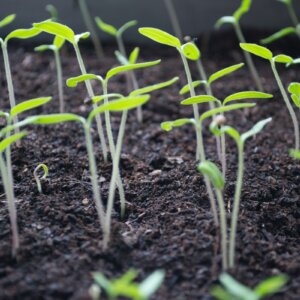



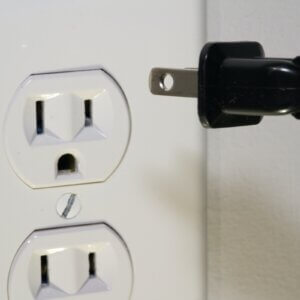

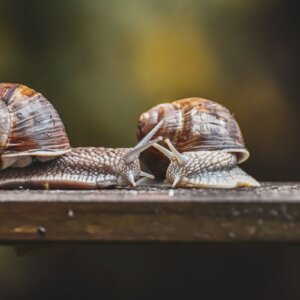

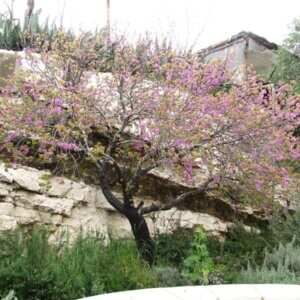

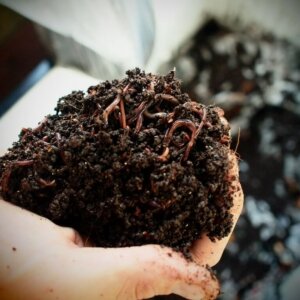



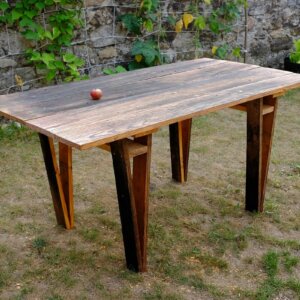


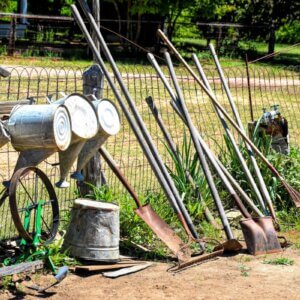


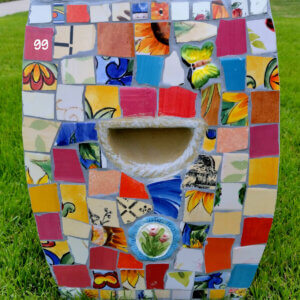

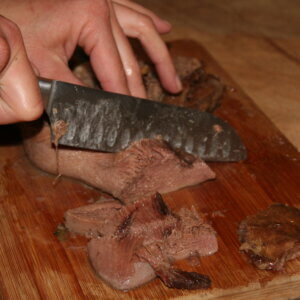

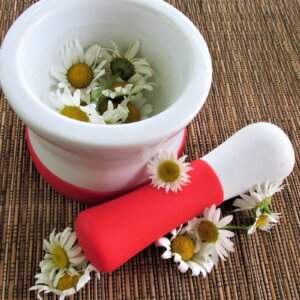


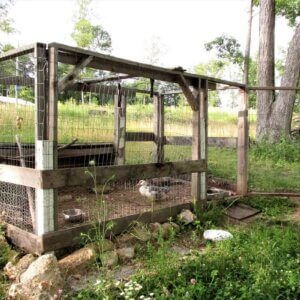

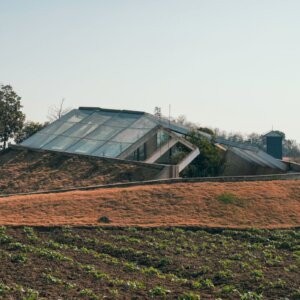
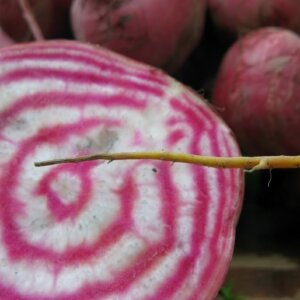






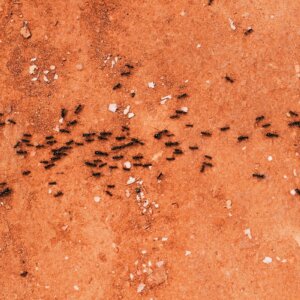
Leave a Reply